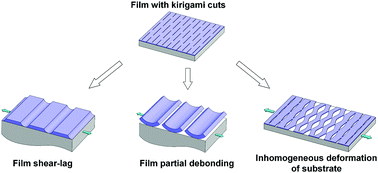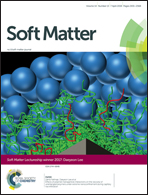Kirigami enhances film adhesion†
Abstract
Structures of thin films bonded on substrates have been used in technologies as diverse as flexible electronics, soft robotics, bio-inspired adhesives, thermal-barrier coatings, medical bandages, wearable devices and living devices. The current paradigm for maintaining adhesion of films on substrates is to make the films thinner, and more compliant and adhesive, but these requirements can compromise the function or fabrication of film–substrate structures. For example, there are limits on how thin, compliant and adhesive epidermal electronic devices can be fabricated and still function reliably. Here we report a new paradigm that enhances adhesion of films on substrates via designing rational kirigami cuts in the films without changing the thickness, rigidity or adhesiveness of the films. We find that the effective enhancement of adhesion by kirigami is due to (i) the shear-lag effect of the film segments; (ii) partial debonding at the film segments’ edges; and (iii) compatibility of kirigami films with inhomogeneous deformation of substrates. While kirigami has been widely used to program thin sheets with desirable shapes and mechanical properties, fabricate electronics with enhanced stretchability and design the assembly of three-dimensional microstructures, this paper gives the first systematic study on kirigami enhancing film adhesion. We further demonstrate novel applications including a kirigami bandage, a kirigami heat pad and printed kirigami electronics.

- This article is part of the themed collection: Soft Matter Lectureship Winners


 Please wait while we load your content...
Please wait while we load your content...